
|
University of Tennessee Sustainable Technology through Advanced Interdisciplinary Research (STAIR) PhD Program |
|
Neutron Diffraction Experiments on the NOMAD Beamline at the Spallation Neutron Source,
Oak Ridge National Laboratory, Oak Ridge, TN Knoxville, TN - April 26-28, 2013 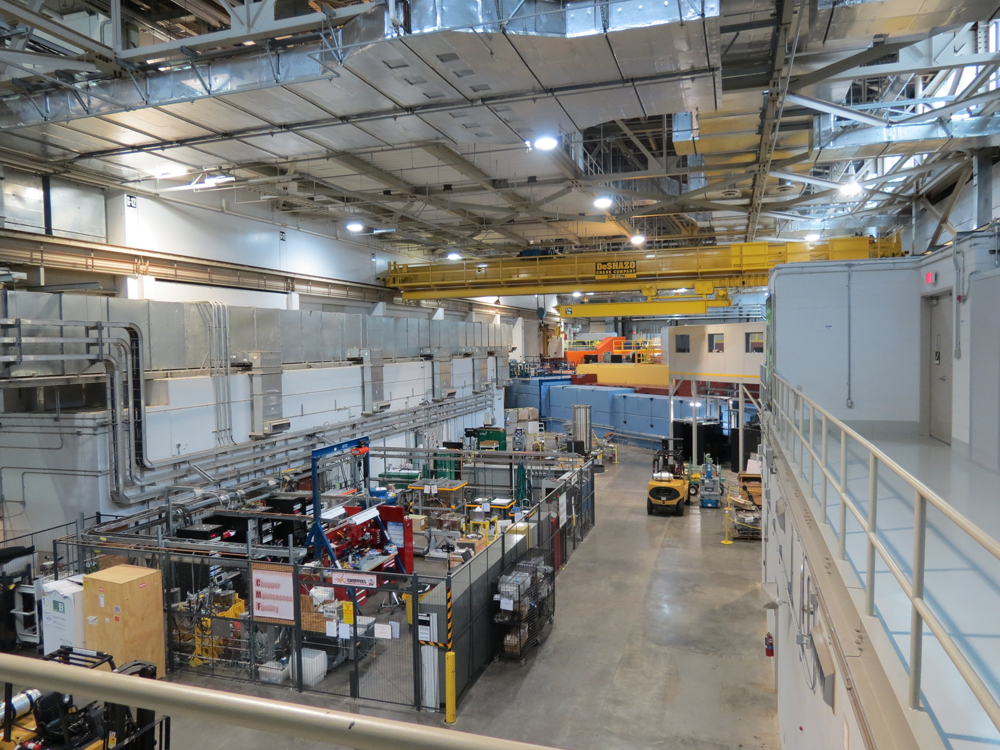 As part of the collaboration between the Computational Materials Research Group led by Prof. David Keffer (UTK MSE) at the University of Tennessee and Dr. Orlando Rios, Staff Scientist in the Materials Science Division at Oak Ridge National Laboratory, we examined some novel battery electrode materials using the NOMAD beamline at the Spallation Neutron Source at Oak Ridge. 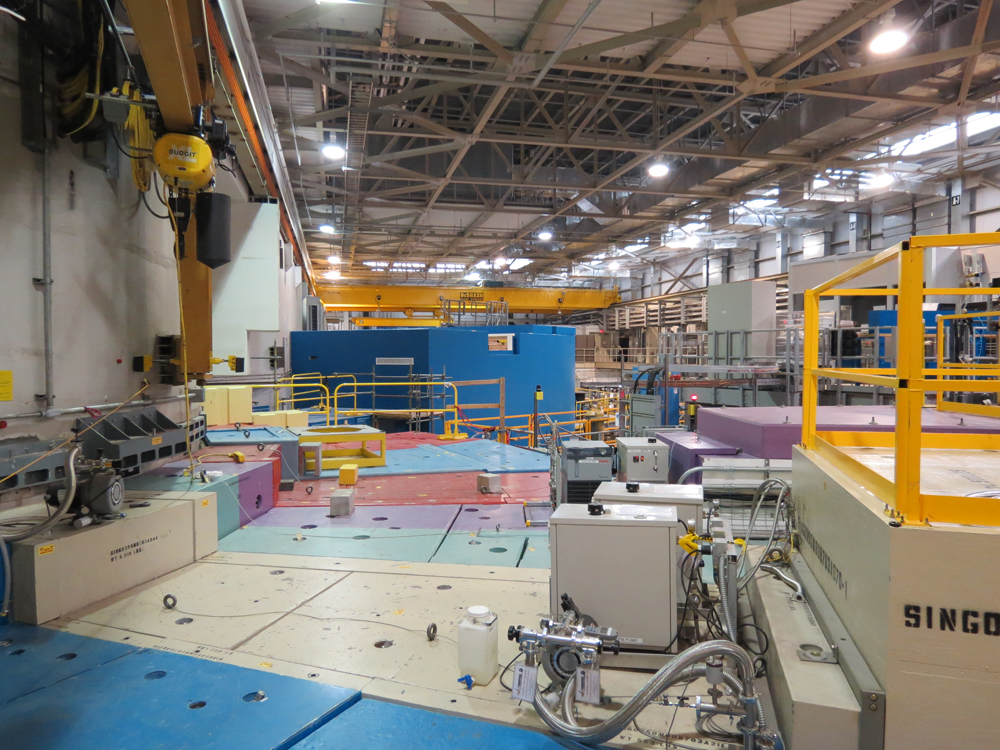 The SNS is DOE's premier neutron source. 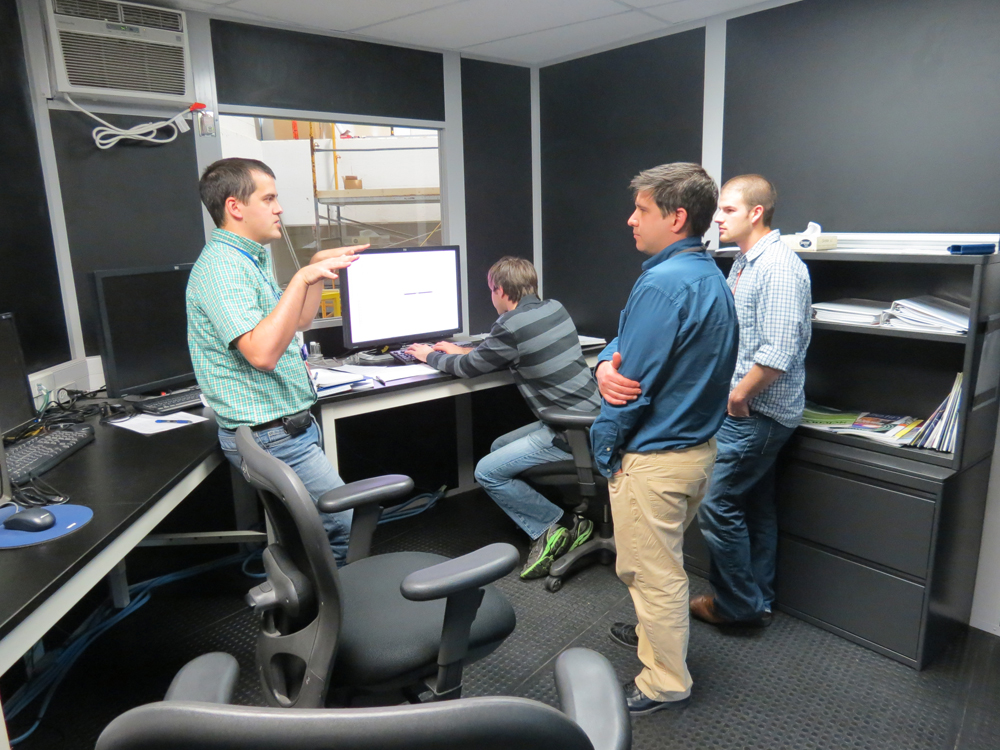 NOMAD Beamline scientist, Dr. Mikhail Feygenson, instructs the users, including Dr. Orlando Rios and two University of Tennessee graduate students, Nick McNutt and Marshall McDonnell. 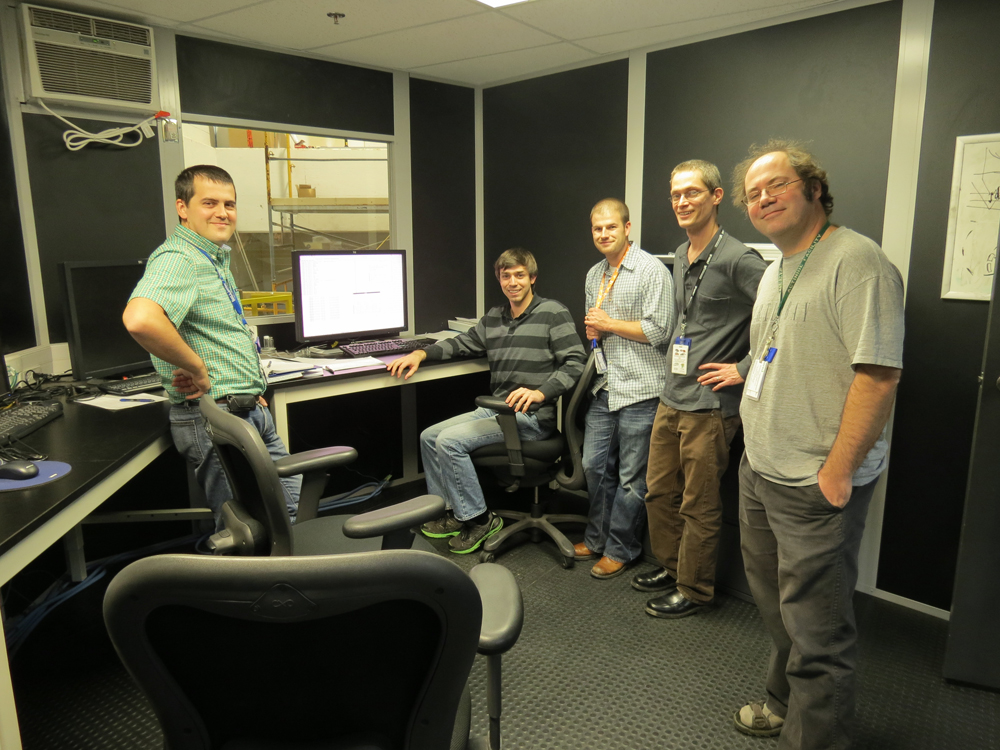 From left to right: Dr. Mikhail Feygenson, Nick McNutt, Marshall McDonnell, David Keffer, and Dr. Jörg Neuefeind, the NOMAD Beamline scientist, responsible for writing the software that translates the raw data into a form usuable by scientists and engineers. 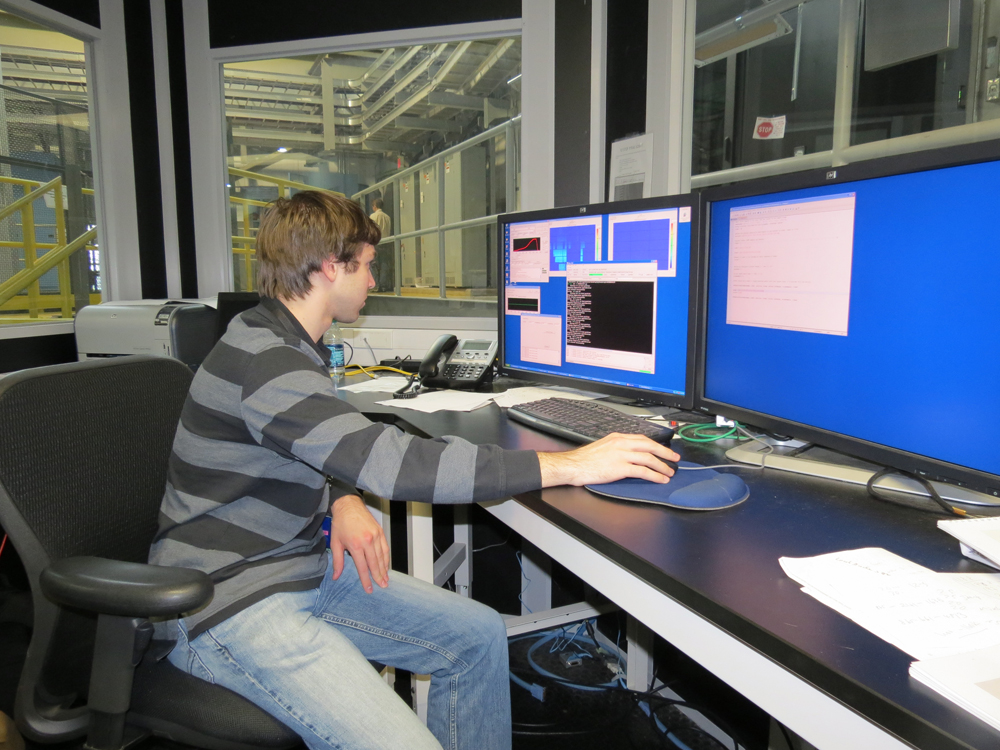 Nick McNutt, funded by the High-Performance Computing program from Oak Ridge Associated Universities and the UT Sustainable Energy Education and Research Center had the opportunity to control all aspects of the process from the control room. 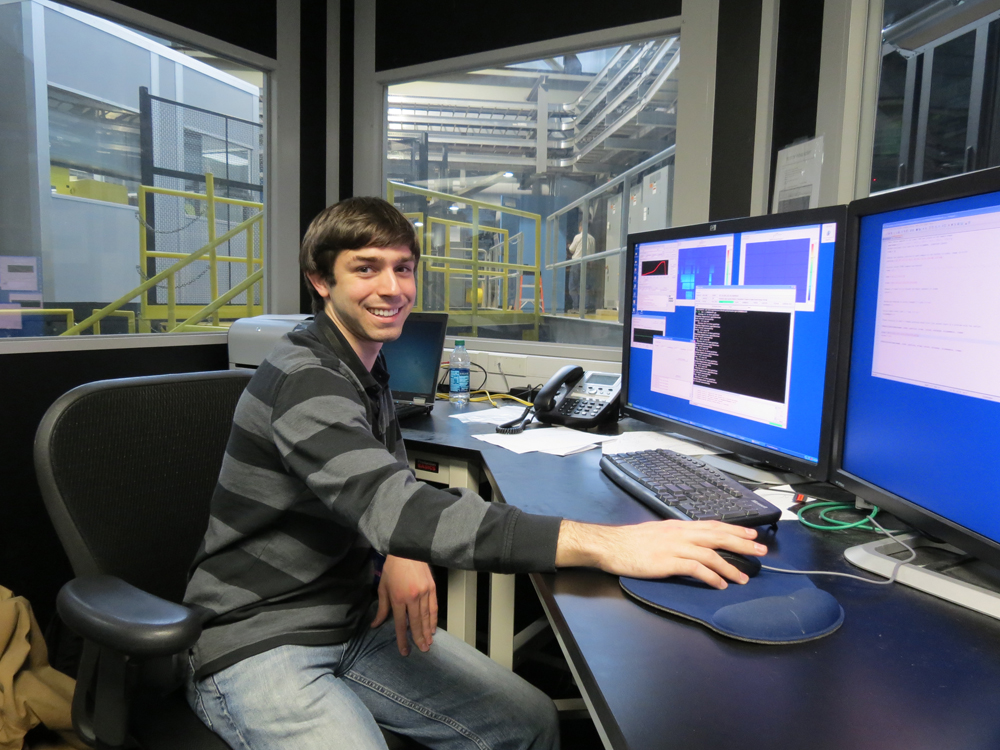 Even though Nick is primarily focusing his PhD studies on computational modeling, the opportunity to work hands-on with experimental characterization of the materials that he is modeling provides him with an additional understanding of the demands of the experimentalists, better preparing him to join in meaningful dialogue with experimentalists and to design computer simulations that best complement the experimental work. 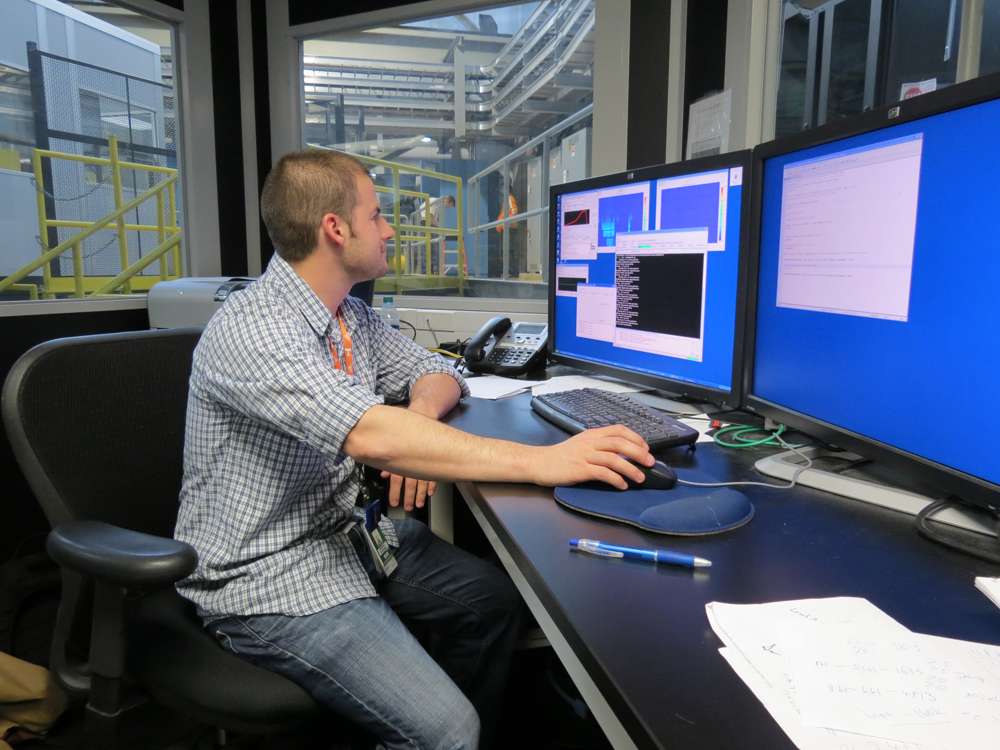 Marshall McDonnell, a PhD student in the UT Chemical and Biomolecular Engineering Department also took full advantage of the opportunity to immerse himself in the neutron experiments. 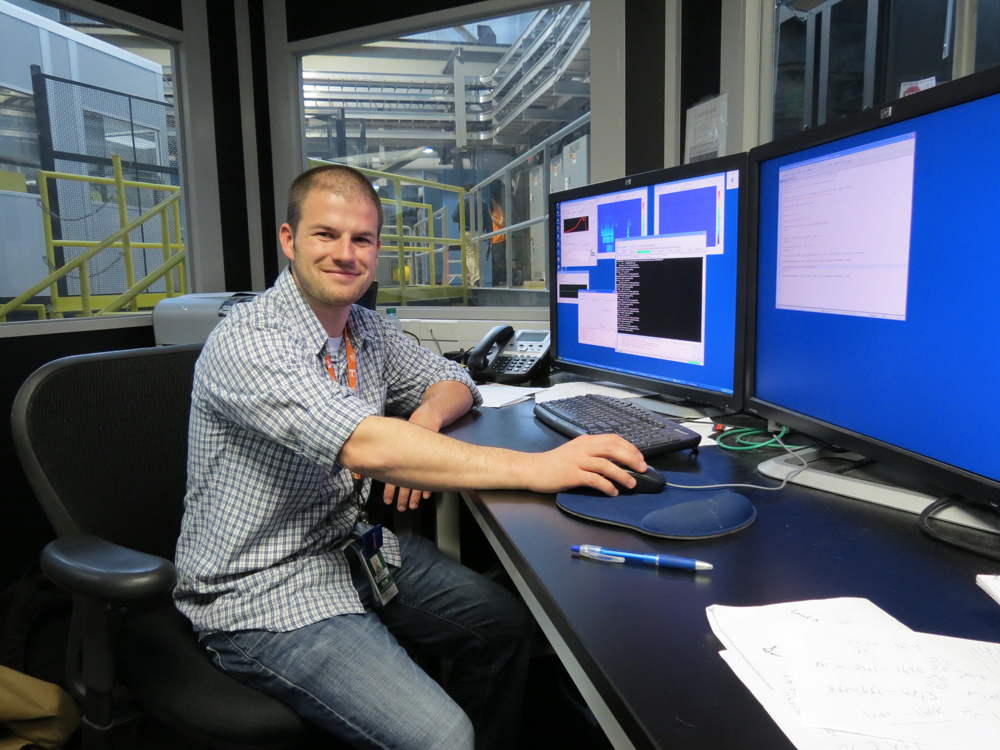 Marshall uses computational tools to study fuel cell processes at the molecular level with support from the STAIR program at UT, an interdisciplinary graduate program in sustainable technology and an NSF IGERT. 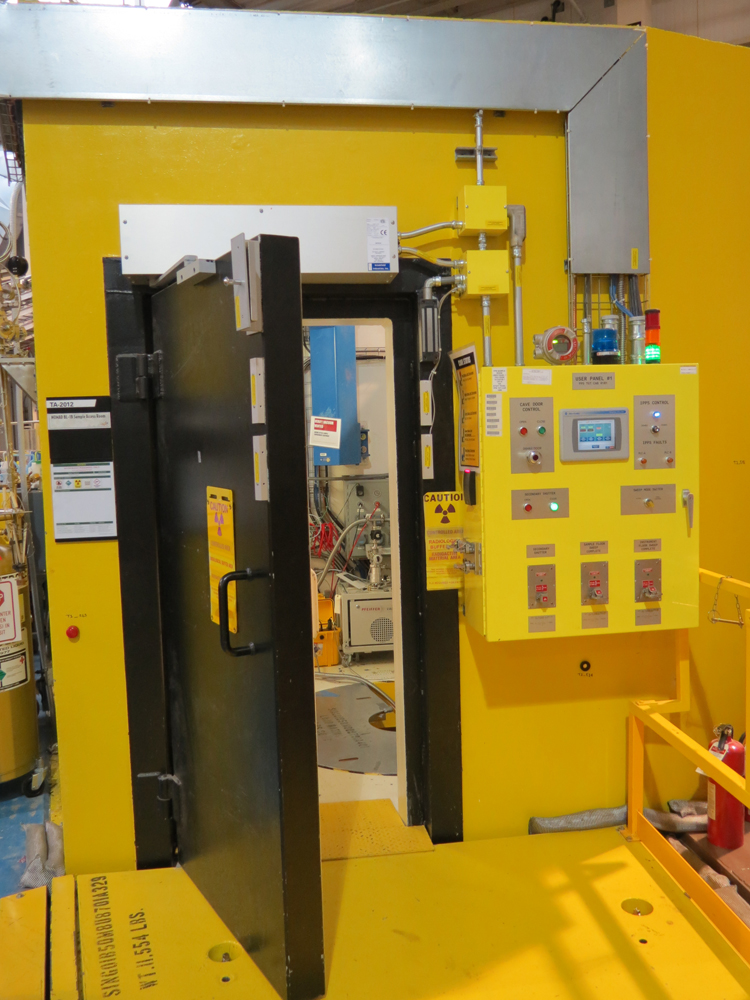 "The Cave", where the samples are lowered into the path of the beam. 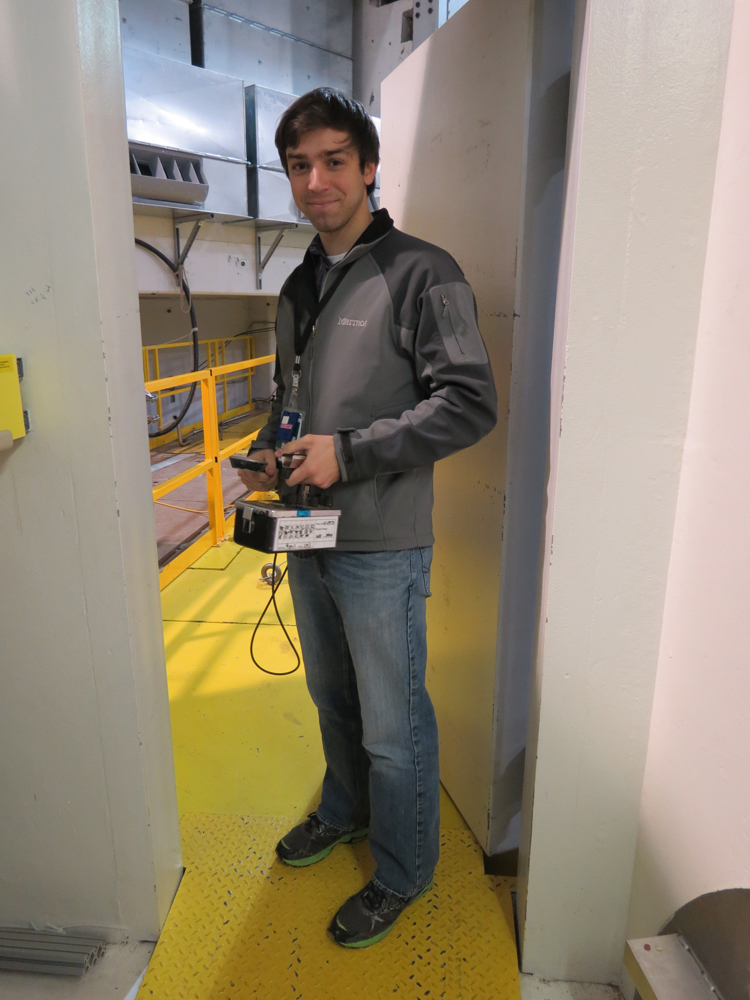 Nick stands ready with the Geiger counter to determine if the samples have been irradiated by exposure to neutrons. 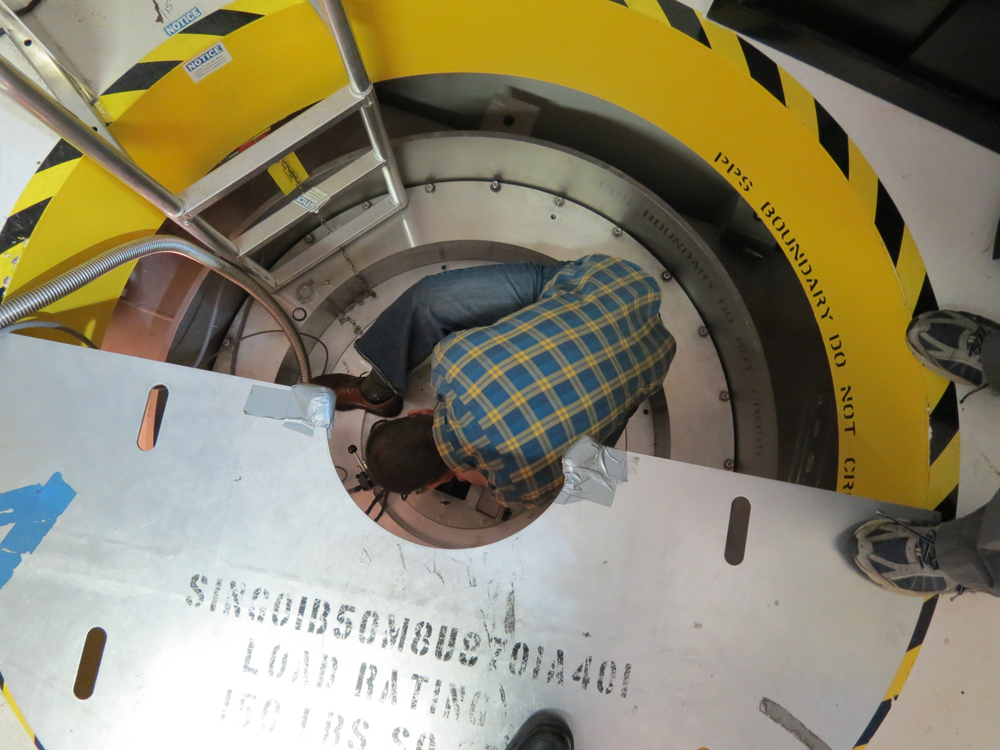 Marshall raises the first batch of samples up. It requires a delicate hand. The sample holders are made of a very thin quartz crystal in order to minimize interference with the signal but as a result they are quite fragile. Breaking a radioactive sample in the cave would throw a wrench in our well-laid experimental design. 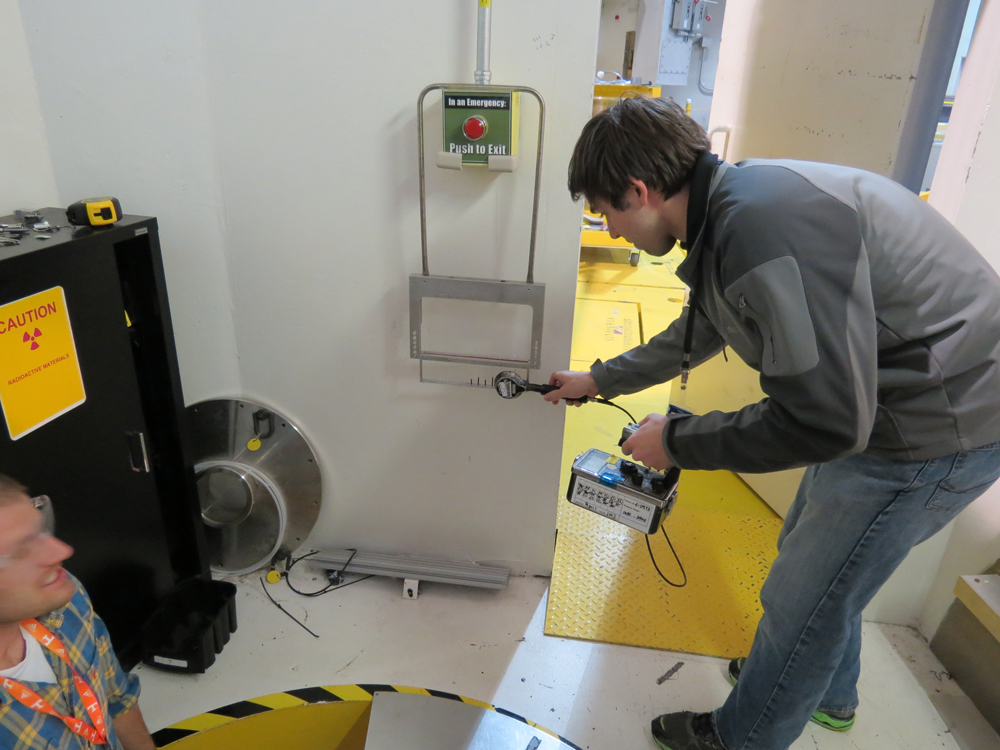 Nick scans the samples. 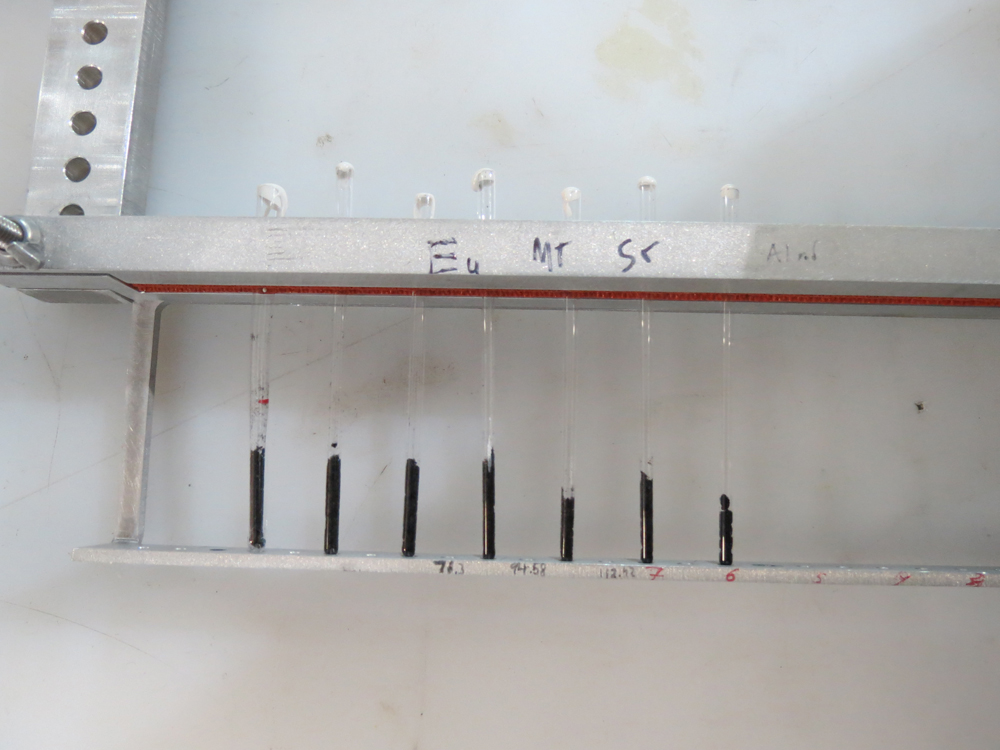 The first batch of samples. 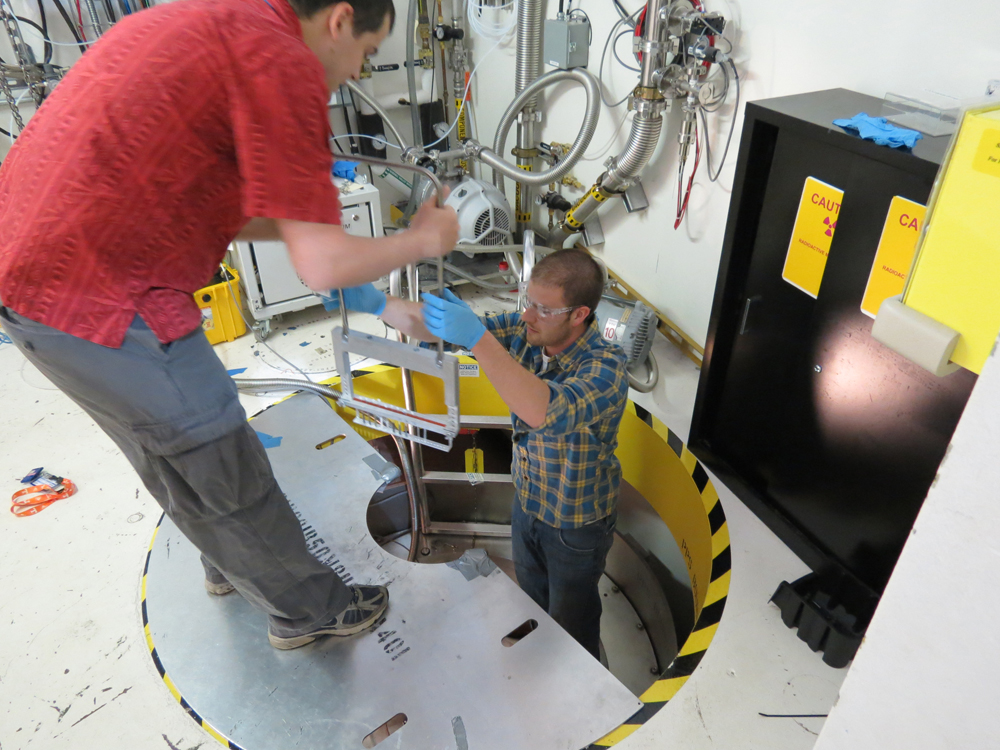 Mikhail and Marshall lower the second batch of samples. 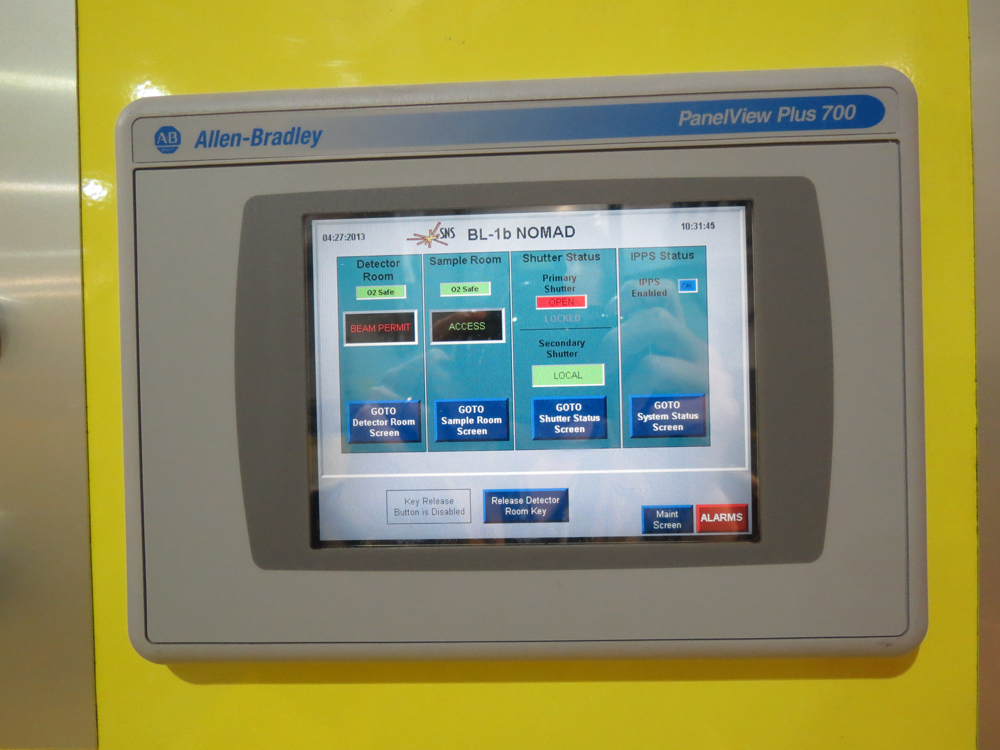 Marshall and Nick quickly mastered the procedures for the beam. They trusted me with nothing. 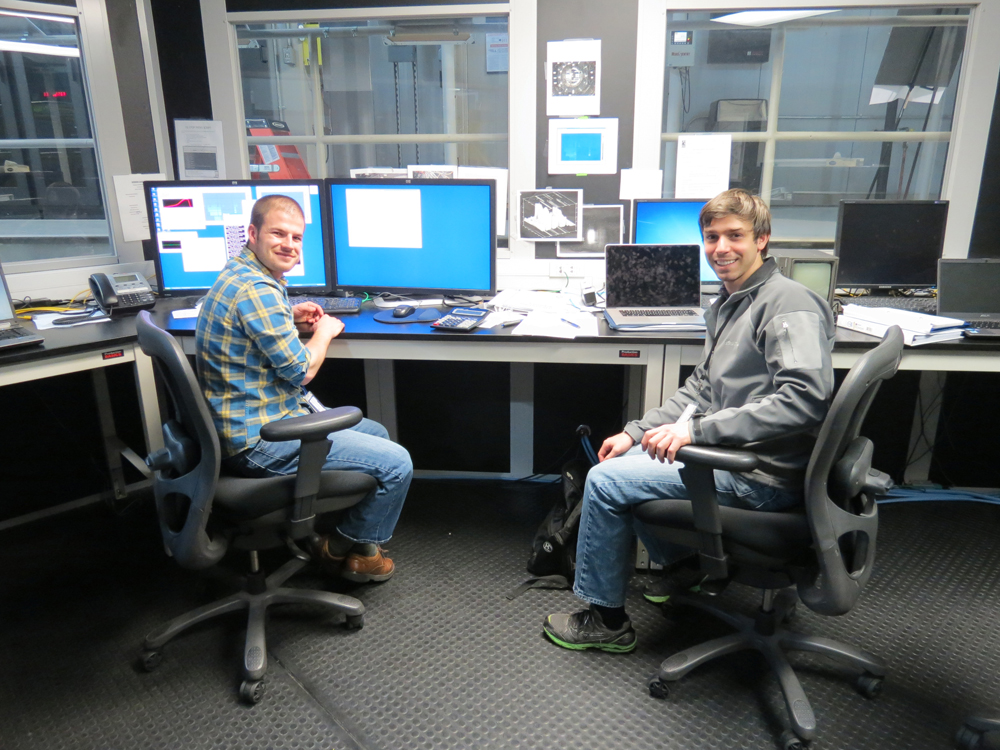 Participating in a neutron diffraction experiment at the SNS was an incredible educational experience for this pair of molecular modelers. *Support for this project was provided by the ORNL LDRD program (Rios) and the University of Tennessee JDRD program (Keffer). As noted above, McNutt is supported by an ORAU HPC grant and a UT SEERC grant. McDonnell is supported by the STAIR program at UT, an NSF IGERT. |